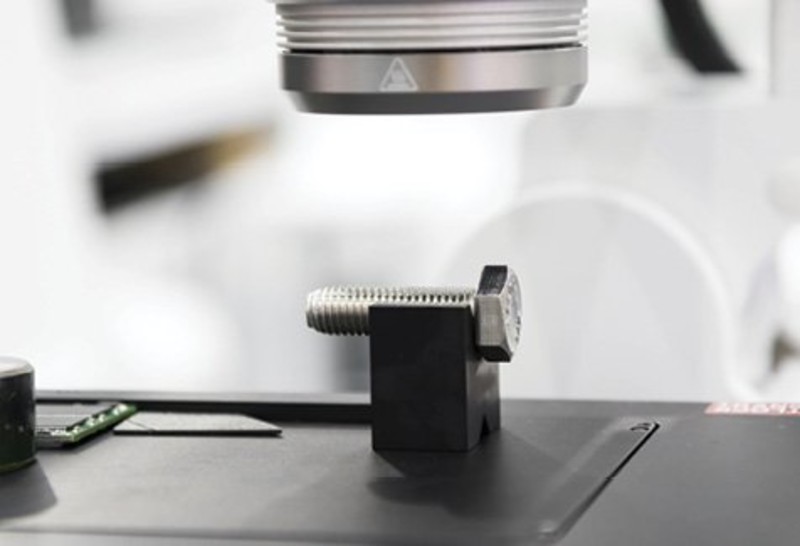In the past several years, additive manufacturing (AM) has unquestionably moved from polymer-based prototypes to production-quality metals, but the industry is in the midst of some major growing pains, specifically in the areas of industry standards, quality assurance (QA) and realizing business ROI. In this article, we take a look at these challenges, and in the next issue, we’ll look at AM opportunities.
STANDARDS IN FLUX
The industry recognizes both how many standards are necessary for AM to be broadly adopted, as well as how many standards currently exist and need to be coordinated and harmonized. ASTM International’s Committee F42 is the main standards body for AM in the United States. It currently has 22 standards and has defined seven printing processes. In coordination with ASTM, ISO, an independent, international organization has also developed standards for AM within their technical committee, TC 261. To coordinate standards development between organizations, the Additive Manufacturing Standardization Collaborative (AMSC), a collaboration between America Makes & American National Standards Institute (ANSI), was created.
However, hundreds of other AM standards and procedures have been developed by other organizations in the meantime. These include standards established by AMST, SME, National Aerospace and Defense Contractors Accreditation Program (NADCAP), the 3MF Consortium, SAE International Additive Manufacturing Committee AC7101’s Aerospace Material Specifications (AMS), NASA, DOD, the U.S. Navy, the U.S. Army, as well as different nations.
It will take many years for a consistent set of national and, ultimately, international AM standards to be established and adopted globally.
QUALITY ASSURANCE
The quality assurance (QA) of AM-produced metal parts is probably the greatest obstacle affecting the speed of AM technology adoption right now. Feedstock materials (especially powders), print processes, and final parts are subject to a huge amount of variability in terms of material and mechanical quality. Rigorous quality standards and inspections are necessary to ensure the consistency, repeatability, and reliability of final parts is met. Planning, building, and implementing a certifiable QA process requires time, training, and resources, as well as investment in new technologies, processes, and talents.
Metal powder properties must be consistent in every batch, including particle size distribution and the composition, size, and shape of the particles themselves. Additionally, for safety-critical applications such as aircraft parts or medical devices, the material used must be
100-percent-free of contamination because impurities can alter the properties of the final part. Metal powders can become contaminated during the printing process, storage, transportation, and handling.
“AM is turning out to be more complex than people realized,” said Dr. Marcin Bauza, head of ZEISS Additive Manufacturing Process and Control. “There are so many variables that affect the production of a part. The same batch of powder from the same vendor can produce different mechanical properties in different locations of the final product depending on how the powder is processed. For example, the size distribution of individual powder particles influences how the powder is compacted and the density of the build, possibly creating defects visible later in the process. Furthermore, different process parameters will generate different grain and crystallographic structures resulting in very different heat treatment steps required to achieve the desired part properties. For this reason, we cannot follow the standard heat treatment processes as we used to with subtractive methods, because the starting metallographic structure might be very different.”
Destructive testing of hundreds of copies of final parts to ensure quality is cost-prohibitive for any type of production and cancels many of AM’s operational advantages. Non-destructive testing is the only viable option, and these methods and standards are still evolving.
One of the most precise ways to qualify metal powders is by using non-destructive Computed Tomography (CT) scanning, which can capture details down to a few microns, with high-resolution micro-CT scanners reaching down to 0.05-micron voxel size. CT scanners provide in-depth data on powder microstructure and can measure material composition, particle size, shape distributions, porosity, density, substrate bonding issues, uneven material flow, as well as dimensional accuracy and surface roughness inside and outside of the part.
Maintaining the consistency and repeatability of the printing process to ensure build quality over time is another challenge. Process control must be established for printing equipment to ensure that end products are consistent from part to part. It is not uncommon to need to measure more than 100 initial samples before the tools are adjusted sufficiently to enable volume production to start. For example, a laser powder bed machine can drift from its optimal settings, and because prints happen with elevated temperatures, defective coating can result in voids and non-stable print parameters and can result in differences in grain size and shape.
THE NEED FOR TESTING
AM’s ability to affect both outer shape coupled with the ability to determine internal part properties is why AM has such unprecedented capabilities and simultaneously requires unique considerations for qualification.
Contrary to processes that use molds or other tooling, AM can process a limitless combination of geometries. While this flexibility is one of its greatest strengths, it also represents a limitless unknown for quality assurance. In CNC machining, the scope of variation is limited to achieving only the outer surface geometry, since the inside volume properties of the billet are already set. Yet, AM must also factor in internal features and composition with outside geometry.
Lastly, final parts need to be examined for their material properties to ensure they have not experienced changes in microstructure during processing. This includes examination of crystallographic composition, density, porosity, mechanical strength, tensile strength, stiffness, internal and external part geometry, surface quality, and finish.
“An additional cost that needs to be factored into AM is the need for post-processing,” said Jason Jones, CEO, Hybrid Manufacturing Technology. “3D printing initially found traction as a design and prototype-oriented activity, based largely on polymer parts. Post processing needs were evident but could be done relatively easily and cost-effectively. But since metal is now being used for actual production parts, substantial post-production finishing is almost always a requirement. This takes time and requires inspection.”
In summary, the industry is still in the relatively early stages of developing standardized testing methods, protocols, and reference data to qualify AM materials, processes, and parts.
MAKING THE BUSINESS CASE
Estimating the ROI for production quality AM is a challenge as well. Direct costs include everything from design concept to print recipe development through final part qualification. The difficulty in quantifying some of these elements, combined with the technical challenges, is still too great for most companies today. The two areas where there has been early adoption is the aerospace industry, which has seen clear ROI due to the very high “buy-to-fly ratio” (cost savings derived from the reduced weight of AM-produced parts), and the production of some less critical and less complex parts including indirect parts and machine tools.
It is clear that ongoing education and training will be critical in the AM industry. “As a 20-year industry veteran,” said Joe Wilker, advanced multitasking manager, Mazak, “I have witnessed the amount of training and education required in the machining industry as each new machine hit the market. It took multitasking a long time to catch on before companies really believed that it would benefit them. It will likely take many years to take AM to the next level as well.”






